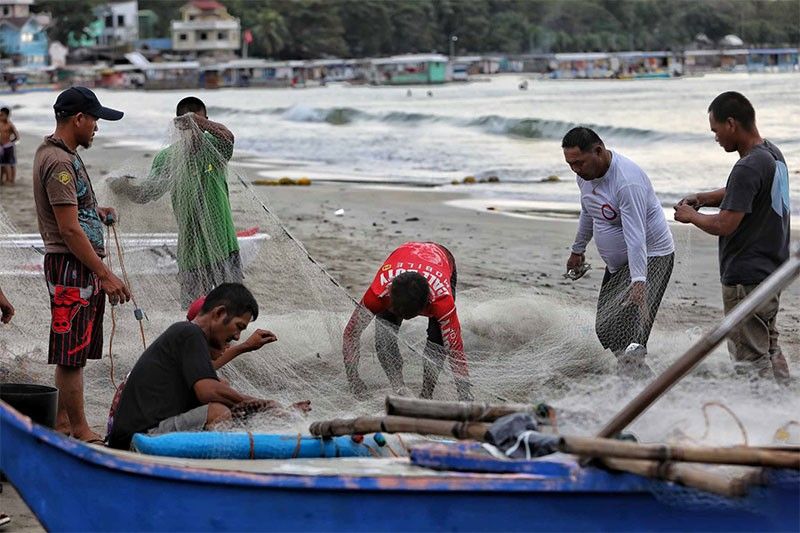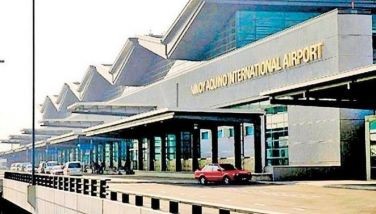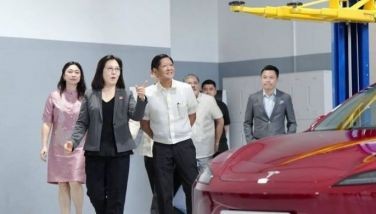‘Fisheries development and the restrictive economic provisions in the Constitution’


The fact that we have a recently installed Secretary of Agriculture whose business roots are in the fisheries sector has inspired me to look into the state of our fisheries development as a component of our national economic performance.
The lag in food production in our country is itself a motivation to improve our economic development effort. Therefore, to do better in agriculture is also to achieve greater quality of achievement in development.
Relevance to the restrictive provisions. The information I found myself collecting is very relevant information to the issue of “restrictive economic provisions in the Constitution.”
This is hot topic in the political discourse of the moment. There is a plan to amend these provisions for the better.
First, we must digest the meaning of the data we derive from an industry that appears on first impression to be remotely relevant.
Yet, if we think hard about it, the numbers should tell us why the poor development of the sector is the presence of the restrictive economic provisions. (I deal with this thought at the end of this column.)
Phl lags in fisheries development. The picture of Philippine development in fisheries is the same as that in land agriculture. It is relatively bleak, as in rice agriculture.
A gift of geography – an archipelago of many islands in the midst of a wide open Pacific Ocean – uniquely gives our country the natural advantage that few countries have to develop their fisheries. Yet, our fisheries industry has lagged behind in economic development compared to our neighbors in ASEAN.
Comparative statistics of the development of fisheries among a few of principal countries in ASEAN provided by SEAFDEC (Southeast Asian Fisheries Development Center) and by the UN’s FAO (Food and Agriculture Organization) reveal this.
The total output of marine capture fisheries (that is, fish caught in the open seas) in 2020 among ASEAN member countries was 18.2 million metric tons, with a value of $24.5 billion.
(For a global perspective, Asia is the biggest source of the world output of fisheries. In 2020, Asia’s output [excluding that of the broader Southeast Asia] is 114.1 million metric tons. Another 46.2 million metric tons in caught in the broader Southeast Asia. The total global output of is 214.1 million metric tons.)
According to SEAFDEC on marine fish capture in 2020, Indonesia produced 6.49 million metric tons (MMT); Vietnam 3.7; Myanmar 3.6; Philippines 1.9; Malaysia 1.38 million; and Thailand 1.3.
According to similar marine fish capture from the FAO for 1984, Indonesia produced 1.7 MMT; Vietnam 0.53; Myanmar 0.47; Philippines 1.3; Malaysia 0.73; and Thailand 1.9.
These numbers between 1984 and 2020 indicate that Indonesia and Vietnam had the most spectacular growth in marine fisheries among ASEAN countries.
The second major sector in the fisheries industry is “inland capture fisheries.” This represent the culture of fisheries from inland waters.
The comparative statistics on inland fisheries in ASEAN is less comprehensive and the output data is less spectacular in terms of differences in output compared to marine fisheries. In ASEAN countries, the output of inland fisheries is generally more dominant in the primary diet of the bulk of the population while marine capture data are dominated by international trade performance.
Comparative data on statistics of fishing boats is much more revealing about the investments being made in the fisheries of these countries. SEAFDEC tracks data on the composition of fishing boats – among “non-powered” boats and “powered” boats.
An indicator of capital investment: ‘powered boats.” In this numbers, the Philippines does very poorly in comparison with other ASEAN countries.
In 2020, Indonesia had 1,161,332 total fishing boats, of which 1,001,915 were powered boats; Malaysia had 48,826,of which 46,715 were powered; Myanmar had 22,407, of which 18,070 powered; the Philippines and Thailand submitted date only of “powered boats,” respectively, of 5,557 (Philippines) and 10,388 (Thailand); and Vietnam, in turn, submitted only total boats data, 35,214. (Note: because of Vietnam’s high economic performance in the fisheries sector through the volume of its exports, these boat data must be dominated by powered boats.)
These numbers on powered boats are an indicator of the huge lag of the Philippines in the fisheries industry. Powered boats represent technological superiority over non-powered boats.
They make possible higher productivity, and to that effect, partly inform us about the higher incomes of those employed in the industry. They may also suggests the presence of more modern capital infusion to the industry, which points to the presence of foreign capital investments.
The fisheries sector, like the agricultural sector as a whole, is part of the economy that is very sensitive to the issue of the debate on the “restrictive economic provisions of the Constitution.”
From the beginning, the economic restrictions applied against the ownership and exploitation of our natural resources, land, and the ownership of public utilities.
In our development policies since independence, all these sectors have been hindered in development. They excluded the participation of foreign capital in the exploitation of economic opportunities to gain from business in these activities.
In the fisheries sectors, the Filipino first policy was to deny foreign participation in the exploitation of fisheries resources. This was done through the prohibition in the use of land and coastal waters for fisheries production to foreign capital when the country lacked the required venture capital.
A relevant question for our policy-makers is to inquire about the extent of foreign capital and technology (including expertise) in the recent rapid growth of the fisheries industries of Indonesia and Vietnam as a start.
I do not pretend to know the answer. What I know is that these countries do not have written in their constitutions the restrictions that we find in ours.
They may have specific regulations and laws that apply to foreign participation in their fisheries sector, but these laws and regulations are part of policies that were crafted to assist the proper development of their fisheries sectors.
In short, these countries had great flexibility in the determination of the proper policies to develop their industries.
For archives of previous Crossroads essays, go to: https://www.philstar.com/authors/1336383/gerardo-p-sicat. Visit this site for more information, feedback and commentary: http://econ.upd.edu.ph/gpsicat/
- Latest
- Trending





























